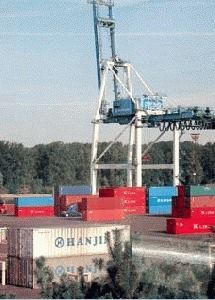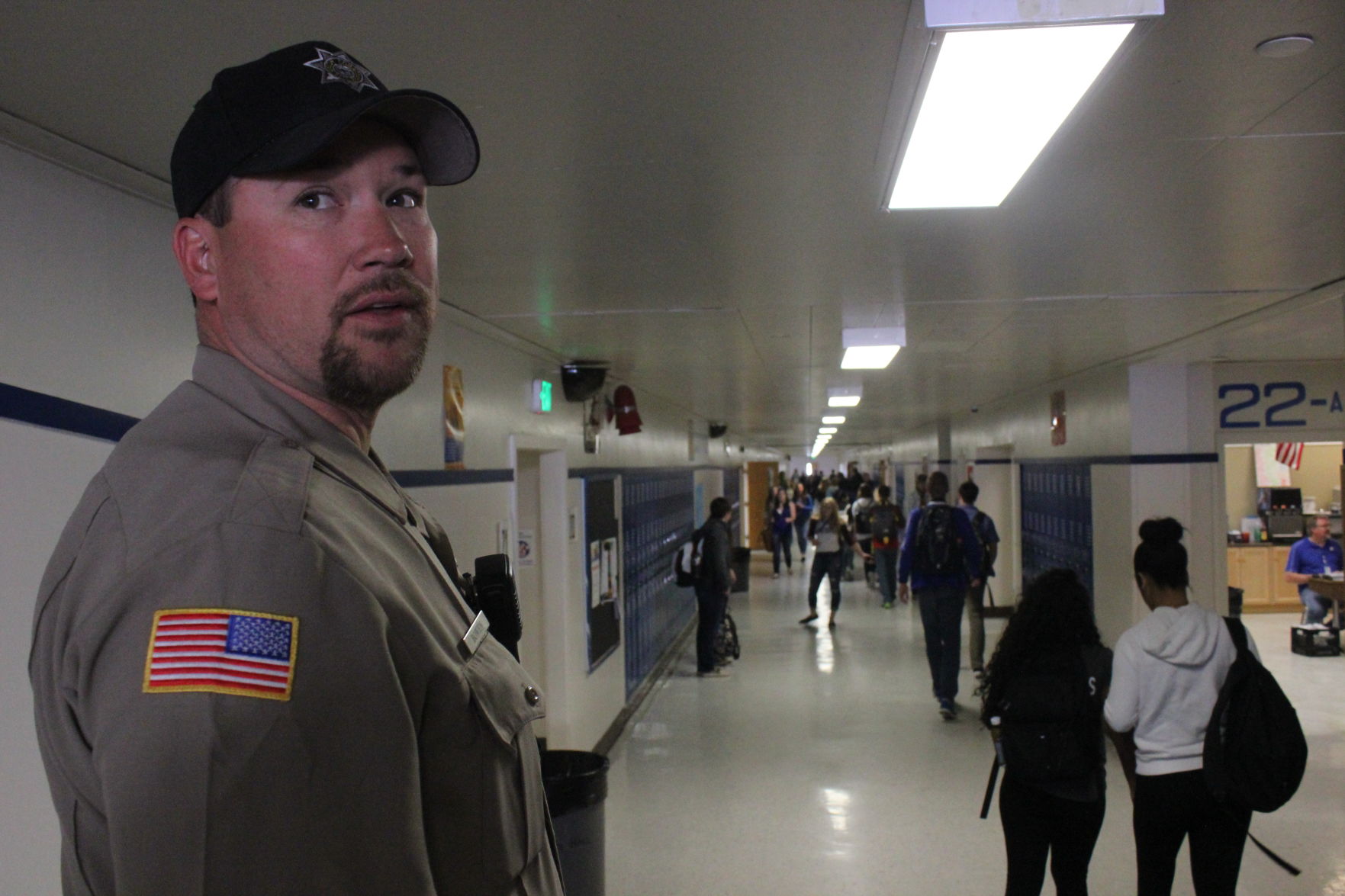FEEDING THE WORLD
Published 12:00 am Monday, October 25, 2004

- Loading power: This crane at the Port of Portland will lift containers filled with thousands of pounds of U.S. grain and flour bound for distant ports. Deceptive from a distance, the blue building high on the platform from where the crane is operated is roughly the size of a doublewide manufactured home. (Photos by Mardi Ford of The Observer).
By Mardi Ford
Trending
Staff Writer
A few weeks ago, The Observer gave me the opportunity to go to the North American Agricultural Journalists’ annual conference held near Portland. Members of the NAAJ, I found, are mostly from the Midwest, and the organization only plans a conference in the West every 10 years or so. A rare opportunity for The Observer’s ag reporter indeed.
The conference itinerary included, among other things, a tour through the Wheat Marketing Center, a tour of Oregon State University’s Department of Agriculture’s Food Innovation Center, the Port of Portland, Columbia Grain Inc. and a lunch with Katy Coba, Oregon’s Director of Agriculture. So, of course, I wanted to go.
Trending
I had no idea what to expect or what I would discover, but by the end of the conference, my mind was a blur with a whole new vision of
agriculture.
I was shown a bigger picture a much bigger picture. One that reaches far beyond the fields of Union County and Oregon. What I saw in Portland was local agriculture moving in a global market of industry and commerce. It was a real eye opener on just how much agricultural production here at home impacts the world.
In the last year, I’ve done a lot of thinking about how something as vital as domestic food production remains, at best, a mystery to so many Americans.
Sadly, the industry is often underappreciated and underestimated.
A while back, I was talking to a person who worked at a fair booth representing the wheat industry at the Oregon State Fair this year. Those who were manning the booth were making pancakes for the fairgoers.
Good gimmick, I thought smells good, tastes good, makes a good connection between wheat in the field and food in the tummy.
But then, to my profound amazement, this person having spent years working for the agricultural community and particularly the wheat industry at the highest levels went on to tell me that person after person well-dressed, well-spoken, seemingly intelligent, following their noses to the wheat booth asked the same question over and over: "What do pancakes have to do with wheat?"
I was dumfounded. She assured me it really was as bad as that.
The biggest challenges the American farmer faces today are more often in their own backyard than oversees. Although, the disconnect from the land to the market is hard to imagine here in Union County, there are people right here in Oregon who have no idea their daily bread comes from the ground.
Ironically, there are countries all over the world who are very much aware of what the American farmer produces.
See FEEDING, 2B
That reality was brought home to me during my time spent touring the Wheat Marketing Center.
Countries of the Pacific Rim particularly are big U.S. flour importers, but they are very discriminating about their noodles. Every year, they send teams to the Wheat Marketing Center to help us develop in the laboratory our perfect flour for their perfect noodle. Through efforts like these, Union County growers are better able to produce the wheat that meets the demands of a world market.
During an informal lunch, Oregon’s Director of Agriculture Katie Coba talked a lot about the global market and her department’s commitment to expanding the market for all of Oregon’s diverse agricultural industry which produces 220 different commodities.
"Seven years ago, agriculture was struggling in this state. Our producers had to find ways to be more efficient productive looking for ways to expand their markets. Today, our markets are expanding. Thanks to the efforts of the grass seed industry, Oregon agriculture has a foot in the door in China to display Oregon products at the 2008 Olympics for all the world to see. I can’t say enough about the importance of the grass seed industry in building the foundational relationships oversees that have allowed us to expand into new global markets," said Koba.
So, the next time you get stuck behind a farm truck during harvest or perhaps it’s a tractor that slows you down while he pulls off the road as far as he can to allow you to get around him take a second to look at the face behind the wheel. Give him a wave and thank him. Then thank your lucky stars that you live next door to the man who feeds the world.









